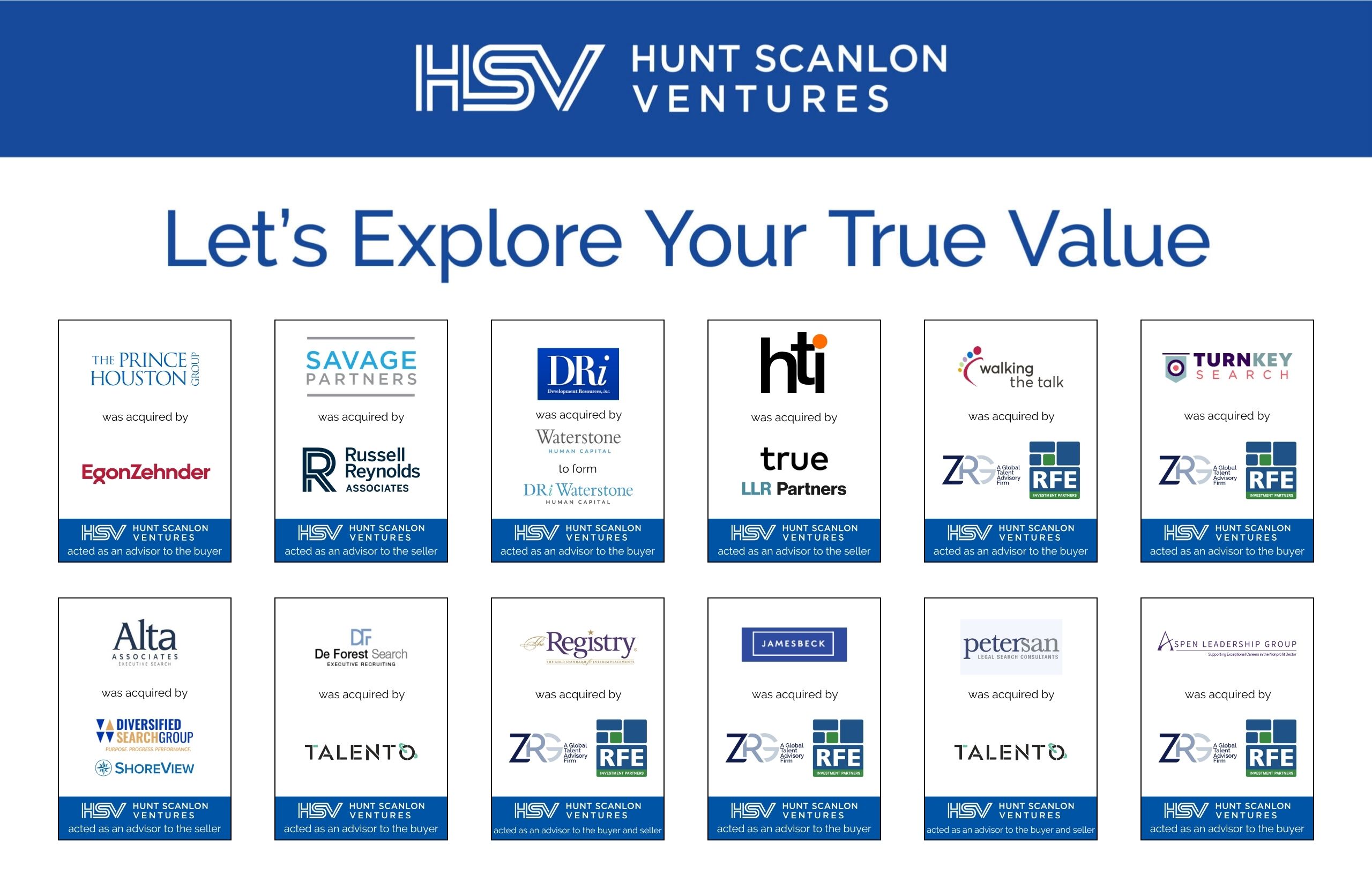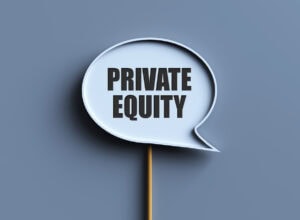Updated research from McKinsey & Co. confirms that companies regularly and systematically pursuing M&A deliver better shareholder returns than companies that don’t. McKinsey senior partner and global leader M&A strategy, Jeff Rudnicki, takes a deep dive with Hunt Scanlon Ventures CEO Scott A. Scanlon.
Nearly 15 years ago, McKinsey & Company set out to answer a critically important management issue: What type of M&A strategy creates the most value for large companies. The answer that came back was clear: Companies that practice programmatic M&A are likely to outperform competitors.
In 2019, McKinsey took another look. It’s research reflected the growing importance of placing multiple bets and being nimble with capital. In a dataset of 1,000 global companies examined over a 10-year period from 2007 to 2017, programmatic acquirers achieved higher excess total shareholder returns than did industry peers using other M&A strategies, such as large deals, selective acquisitions, or organic growth.
In fact, the alternative approaches seem to have underdelivered. Companies making selective acquisitions or relying on organic growth, on average, showed losses in excess shareholder value relative to peers.
Now, McKinsey has taken a fresh view of new evidence in the time period of 2013 to 2023, examining findings from the firm’s most recent Global 2,000 study to better understand what drives shareholder returns. Their latest findings bolster the case for programmatic M&A. But beyond doing more deals, what gives programmatic acquirers an edge – and how does their dealmaking translate to value creation?
Outperforming Competitors
“We have identified key actions that programmatic acquirers take and the relationship that those actions have to outperformance,” said Jeff Rudnicki, a McKinsey senior partner and global leader M&A strategy. “Companies that practice programmatic M&A are likely to outperform competitors, that much we know,” he said.
But taking a programmatic approach doesn’t ensure that a company will necessarily create more value than it would by taking a different approach to deals, he noted. “Creating value through M&A takes commitment,” said Mr. Rudnicki. “The most effective dealmakers build and refine their expertise by doing multiple deals over time,” he said. Yet deal counts are the outcome, he noted, “not the determinant of having an effective strategy.”
“The most effective dealmakers build and refine their expertise by doing multiple deals over time.”
Programmatic acquirers, according to McKinsey, take four crucial strategic actions to outperform their peers:
1. Move Beyond the Core
McKinsey colleagues found that companies were more likely to outperform when they moved beyond, but not too far beyond, their primary businesses. According to their study, acquirers make a large share of their acquisitions outside of the core businesses in adjacencies (different sectors within the same industry) and ‘step-outs’ (sectors beyond their core industry) than their peers do.
According to McKinsey, programmatic acquirers anticipate natural decline of growth in core markets and move aggressively to where the growth is. As a result, they grow faster.
2. Recognize the Strategic Rationale
“Non-programmatic acquirers offer traditional reasons for their transactions,” said Mr. Rudnicki, such as expanding their product lines or service offerings and scaling core businesses. “By contrast, programmatic acquirers are relentlessly mindful of their guiding strategies and have broader sets of value creation rationales,” he said.
Often, those rationales have a competitive twist. For example, said Mr. Rudnicki, programmatic acquirers will pursue scale because they recognize that an industry is undergoing rapid consolidation. Or they might seek to improve their margins because they recognize new opportunities from vertical integration.
3. Prioritize Value Creation Over Price
Good businesses, said Mr. Rudnicki, especially growing businesses, usually cost more than others do. Programmatic acquirers set themselves apart in doing the right deal, even at a higher price, so long as the value created by the deal exceeds the cost of the deal, he said, including the cost of realizing synergies.
“Effective acquirers also recognize that M&A is a capability, not an event.”
“We have found that these dealmakers are more willing than their peers to acquire higher-valued companies, both in absolute price and relative to their own valuation,” said Mr. Rudnicki. “By being willing to pay higher acquisition multiples, programmatic acquirers show a great conviction about their strategies and their ability to create value,” he added.
4. Actively Divest
According to Mr. Rudnicki, some companies succumb to the temptation of empire building instead of value creation. But being bigger isn’t necessarily more value creating, said Mr. Rudnicki. “Our colleagues have shown that dynamically reallocating capital to acquire and divest businesses isn’t only highly prized by investors but also a distinguishing feature of companies that adopt programmatic M&A,” he said.
Key Takeaways for Acquirers
Programmatic M&A has consistently proven to be the most effective approach to dealmaking – by definition, it is a regular and systematic pursuit. It is also a strategy that creates more value over the long term, according to McKinsey research. As such, there are some clear takeaways for acquirers.
Acquirers tend to fare best when they embed programmatic M&A into their strategies and persistently seek to acquire profitable growth. “That means not only doing deals in their core sectors, but also moving to adjacencies,” said Mr. Rudnicki.
“Effective acquirers also recognize that M&A is a capability, not an event,” he noted. “They build and continually refine their M&A operating models and mindsets.” As a result, he added, “they relentlessly reallocate capital, not just to do more acquisitions than their peers but to divest more frequently and at greater deal volumes.” Their commitment to value creation attracts committed, long term capital and powers a virtuous cycle, he said.
Finally, and fundamentally according to McKinsey, the most successful dealmakers commit to long term value creation and they often get there by practice. “In our experience, programmatic acquirers develop an experience-based perspective,” said Mr. Rudnicki. Ultimately, that is the competitive edge they bring to the market.
Article By

Scott A. Scanlon
Scott A. Scanlon is Co-CEO of Hunt Scanlon Ventures, which was formed to assist human capital firms realize their full investment potential. Scott has spent the last three years building the firm’s M&A advisory unit, which now offers a full range of critical solutions to guide founders and their management teams to successful exits. Connect with Scott.






